Introduction
Autism Spectrum Disorder (ASD) is a global phenomenon that transcends borders and impacts individuals from diverse backgrounds. With its complex array of symptoms and challenges, understanding the prevalence and impact of ASD requires a comprehensive and inclusive approach to research. While Western countries have made significant strides in this area, there is a growing recognition of the need to include regions like West Africa in the conversation.
Recent collaborative studies have shed light on the familial nature of autism and the role of genetic factors. However, it is crucial to go beyond genetics and explore the influence of environmental factors and societal attitudes on autism prevalence. By embracing a global perspective and developing tailored strategies, we can ensure that every individual with ASD receives the understanding and support they deserve.
Global Prevalence of Autism
Autism Spectrum Disorder (ASD) is recognized globally as a group of complex neurodevelopment conditions, characterized by diverse symptoms that affect communication, behavior, and social functioning. Reflecting the broad range of abilities and challenges experienced by individuals with ASD, it is aptly termed a spectrum disorder. Distinctive for its extensive variance in symptoms and skill levels, ASD transcends ethnic, racial, and socioeconomic boundaries, asserting its presence in every corner of the world.
Despite the increasing awareness and research conducted predominantly in Western countries, regions like West Africa have only recently begun to be included in the conversation, highlighting a gap in global understanding of ASD's prevalence and impact.
Advancements in research reveal a more detailed picture of ASD's reach and recurrence. A collaborative study by the Baby Siblings Research Consortium, including over 20 global research groups, led by UC Davis MIND Institute researcher Sally Ozonoff, underscores the familial nature of autism. This research, spanning the United States, Canada, and the United Kingdom, echoes findings from 2011 about the likelihood of autism in siblings, providing crucial insights into genetic factors and patterns of occurrence.
These developments emphasize the importance of inclusive and diverse research to fully grasp the global landscape of ASD. It's clear that understanding ASD's global prevalence is not only about quantifying its occurrence but also about recognizing its profound impact on individuals, families, and societies worldwide. The need for a comprehensive approach to research, diagnosis, and care across all regions is a call to action for the global community to ensure that every individual with ASD is afforded the understanding and support they deserve.
Factors Influencing Autism Prevalence Rates
Autism spectrum disorder (ASD) presents a complex tapestry of challenges and variations, not only in symptoms and severity but also in the prevalence across different regions. This variability can be influenced by a range of genetic and environmental factors, which are crucial to understanding in order to provide effective support and interventions for those affected.
Autism diagnosis and support systems can differ markedly by country. In Australia, for instance, a comprehensive assessment for ASD involves a multidisciplinary team and is not restricted by the age of the child, emphasizing the importance of early intervention for improved outcomes. The National Disability Insurance Scheme (NDIS) plays a pivotal role in providing personalized support plans, which include funding for services such as communication and language development, social skills training, and sensory processing assistance.
Research from the Journal of Personalized Medicine highlights the case of dizygotic twins with ASD, emphasizing the diversity of genetic factors at play. Since fraternal twins do not share the same genetic material, their differing characteristics and severities of autism underscore the complex interplay between genetics and the environment in the development of ASD.
Recent findings by the Baby Siblings Research Consortium, with teams worldwide including distinguished UC Davis MIND Institute researcher Sally Ozonoff, reaffirm previous studies on the likelihood of autism in siblings. Such research is critical for families with a history of ASD, as it sheds light on patterns of recurrence and provides insights into genetic predispositions.
The notion of neurodiversity, which recognizes and validates the differences in how people's brains operate, is reshaping our understanding of conditions like ASD. It acknowledges that while some people are considered neurotypical, others are neurodivergent, with conditions that may include ASD and ADHD, among others.
While these insights into the genetic and environmental factors of autism are enlightening, they also pose a challenge as we strive to fully comprehend the role of myriad environmental exposures, many of which remain outside of our conscious awareness.
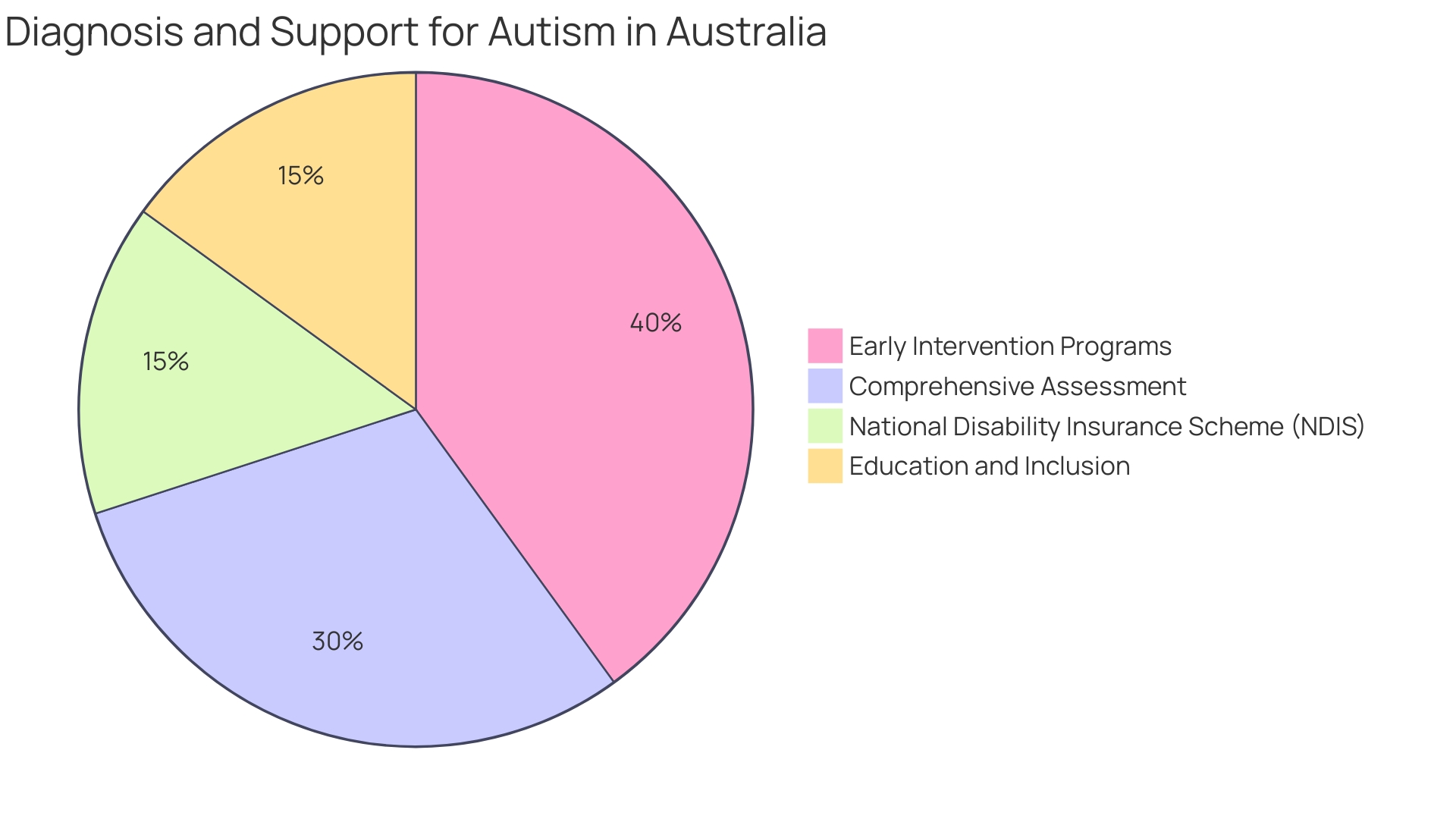
Regional Variations in Autism Prevalence
Regional disparities in autism prevalence are influenced by a multitude of factors that extend beyond genetics. Accessibility to healthcare services, diagnostic practices, and societal perceptions of autism all play a role in these variations. For instance, in areas where healthcare is more readily available and there's a greater awareness of autism, diagnosis rates tend to be higher.
This is not necessarily indicative of a higher occurrence of autism, but rather a reflection of more efficient identification and diagnostic processes.
The way autism is diagnosed also contributes to regional differences. In Australia, for example, diagnosis involves a comprehensive assessment by a multidisciplinary team, and there is no age restriction for when a child can be evaluated. This approach facilitates early detection, which is crucial for effective intervention.
The National Disability Insurance Scheme in Australia underscores the importance of personalized support plans that cater to individual needs, highlighting the country's commitment to providing support for children with autism.
Conversely, a 'needs-led' system is advocated instead of a 'diagnosis-led' one, as shown in a report by Child of the North and the Center for Young Lives. This report emphasizes the crisis in children's autism assessment and the urgent need for early identification and support, without solely relying on a diagnosis. The absence of timely intervention can have long-term negative consequences on children's health and education.
Cultural attitudes towards autism can also affect prevalence rates. In some societies, there may be misconceptions or stigmas associated with autism, which can hinder the diagnosis and support for individuals and families. As awareness increases and societal views evolve, more individuals on the spectrum are identified and can receive the necessary support.
Understanding these regional variations is vital for addressing the global challenges of autism. It informs policymakers and healthcare providers about the need for tailored strategies that can improve support and outcomes for autistic individuals across different regions.
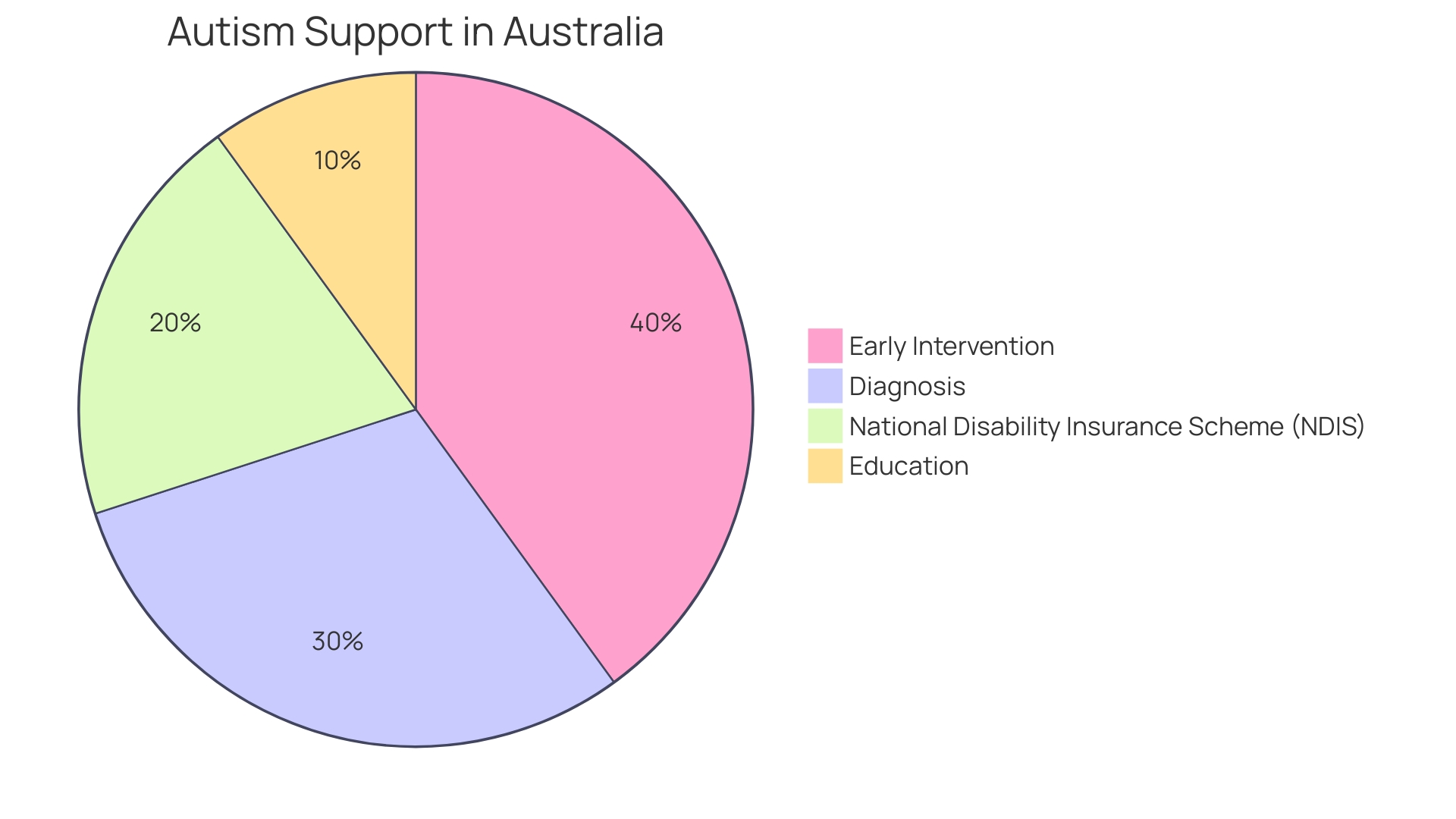
Impact of Improved Awareness and Diagnostic Criteria
As our comprehension of autism spectrum disorder (ASD) deepens, we're seeing a paradigm shift in both diagnosis and societal understanding. The ripple effects of this heightened awareness are evident in the increasing number of individuals identified with autism. This surge in diagnoses isn't merely a statistical uptick; it's a clarion call to re-examine our support systems and the efficacy of interventions.
Recent data unveils a staggering backlog in autism assessments, with England reporting over 172,000 patients awaiting evaluations. This five-fold increase since 2019 underscores the urgency for robust support mechanisms in healthcare and education, where a formal diagnosis is often the gateway to crucial services. Without timely intervention, the consequences can be dire, potentially leading to exacerbated mental health issues and educational disparities.
In Australia, the conversation takes a different turn with the National Autism Strategy, which aims to address service access, healthcare, education, and employment for individuals with autism. Despite this initiative, there's concern that the National Disability Insurance Scheme (NDIS) may inadvertently incentivize diagnosis, contributing to a prevalence rate that now stands at 1 in 25 children.
Dr. Amanda Kelly of Firefly Autism posits that the steady increase in autism rates over the past two decades can be linked to our growing knowledge and refined diagnostic methods. The reality is that these individuals were always part of our communities; we're just now better equipped to recognize and embrace the diversity of the autism spectrum.
Understanding and addressing the nuances of autism requires a multidimensional approach, melding clinical insights with real-world support systems. It's a journey towards not just identifying ASD but enriching the lives of those on the spectrum through comprehensive care and inclusive policies.
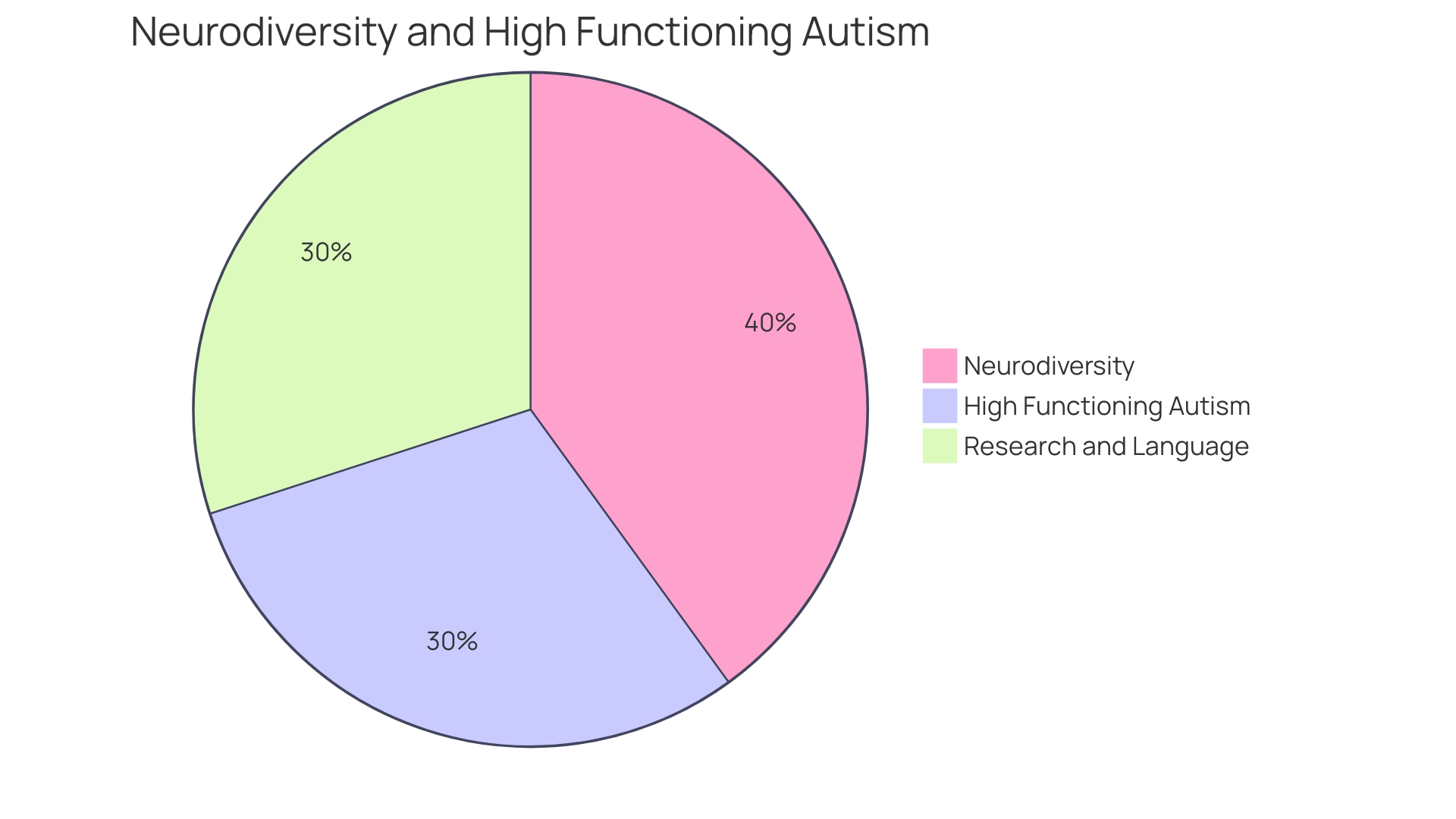
Sociodemographic Factors Affecting Prevalence
A comprehensive understanding of autism spectrum disorder (ASD) extends beyond genetics to encompass various sociodemographic aspects. Studies underscore the influence of factors such as socioeconomic status, education levels, and healthcare accessibility on the occurrence and management of autism. For example, research approved by the Danish Data Protection Agency highlights the importance of ethical guidelines and informed consent in autism studies, emphasizing the need for multidisciplinary approaches to treatment.
Insights from a case study published in the Journal of Personalized Medicine, involving 4-year-old dizygotic twins with 'level 3 severity' autism, reveal that personalized, non-pharmacological interventions can significantly reduce ASD symptoms.
Autism NZ echoes these findings, advocating for early detection and tailored support to improve outcomes for autistic individuals. Chief Executive Dane Dougan points out the critical nature of early intervention, which can begin as early as 12 months. The organization's efforts to train health professionals aim to create a more accessible and informed healthcare system for those with autism.
In Australia, the National Disability Insurance Scheme (NDIS) plays a pivotal role in providing early intervention programs that focus on key developmental areas such as communication, social skills, and sensory processing. Dr. Zafar Rasheed's editorial on autism in Australia further elaborates on the importance of inclusive education and support services in nurturing the potential of those affected by ASD.
In light of these findings, it becomes evident that addressing the sociodemographic factors influencing autism is paramount. By adopting a holistic approach that integrates ethical research practices, personalized interventions, and comprehensive support systems, we can better understand and cater to the diverse needs of populations affected by autism.
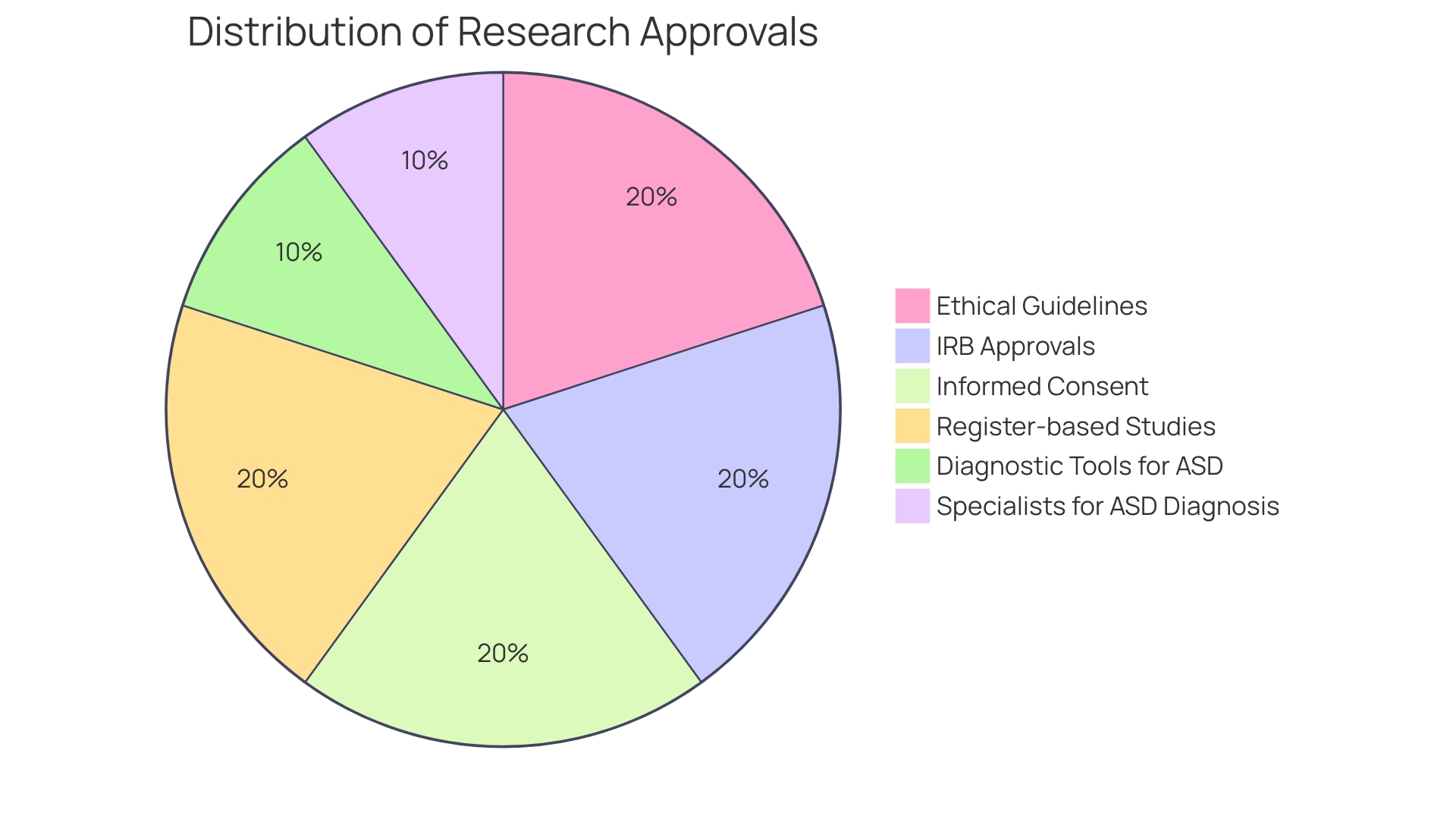
Country-Specific Prevalence Rates
As we delve into the intricate nature of Autism Spectrum Disorder (ASD), we observe a condition that manifests uniquely within each individual, making it a spectrum of varied symptoms and abilities. This diversity is evident across all demographics, irrespective of ethnicity, race, or socioeconomic status. ASD is characterized by challenges in communication and behavior, leading to societal misconceptions and impacting an individual's daily functioning in areas such as education and employment.
Given the global prevalence of ASD, it's crucial to consider the vast differences in reported rates between countries, which can be as stark as the disparities in life expectancy between nations like Japan and Nigeria. Such variations in autism prevalence may signal the influence of distinct cultural, environmental, or healthcare systems, which in turn affect the diagnosis and care available to individuals with ASD. For instance, recent research exemplifies the impact of socio-economic environments on children's health outcomes, suggesting that higher opportunity areas may be linked to better developmental health.
In places like West Africa, where autism was once thought to be a Western-centric condition, the scarcity of research and resources for pediatric ASD remains a significant concern. This underscores the importance of broadening our understanding of autism beyond Western perspectives to ensure inclusive and equitable support for all affected individuals worldwide.
In-depth studies like those conducted by the CHARGE and ReCHARGE teams offer valuable insights into how genetics and environmental factors influence development from childhood through adolescence. Their findings, in conjunction with data from the Child Opportunity Index, reveal the complex interplay between neighborhood characteristics and child health. Similarly, recent findings from Boston University, which observed a substantial rise in autism prevalence among adults, reflect our evolving awareness and diagnostic capabilities.
The commitment to understanding autism on a global scale is echoed by experts such as Dr. Amanda Kelly, who emphasizes the importance of recognizing the uniqueness of autism. As the president and CEO of Firefly Autism, Dr. Kelly advocates for greater awareness and improved screening processes to ensure those on the spectrum are identified and celebrated.
In Australia, the proactive approach to autism diagnosis involves a team of multidisciplinary professionals, highlighting the significance of early detection and intervention. The National Disability Insurance Scheme (NDIS) further exemplifies Australia's dedication to providing tailored support, focusing on enhancing communication, social skills, and overall development in children with ASD.
Dr. Zafar Rasheed's editorial on the state of autism in Australia provides a comprehensive view of the challenges and progress made in supporting individuals on the spectrum, including the shift in recognition and understanding of autism over time. With approximately 1 in 70 Australians on the autism spectrum, the need for ongoing advancements in inclusive education and societal acceptance remains a priority.
These global efforts to understand and support autism highlight the importance of continuous research and policy development informed by international prevalence rates. By examining these patterns, we can foster a world that is more inclusive and supportive of individuals with ASD and their families.
Age of Autism Diagnosis and Its Implications
The timing of an autism diagnosis is a pivotal factor that can shape the trajectory of a child's development and access to critical intervention support. Clinical studies pinpoint the complexity of diagnosing autism at an early age, revealing that around 70.2% of evaluations for children between 16 to 30 months are made with certainty. The remaining cases are shrouded with diagnostic uncertainty, particularly for children who exhibit milder autism-related behaviors or possess stronger cognitive and language skills.
These children are at risk of receiving a diagnosis later in life, which may delay their engagement with early behavioral therapies that have proven to be beneficial.
As children with autism display a wide array of behaviors, the diagnostic process, which relies heavily on clinical judgment through observation and reporting, can be lengthy and delay access to vital early intervention services. Striving for efficiency in this process, technology, such as eye-tracking, is emerging as a tool to support earlier diagnosis by providing objective data on the developmental signs of autism.
Even commonly used screening tools like the M-CHAT-R/F, administered during well-child visits, face challenges in real-world application. Despite its high specificity, its sensitivity and positive predictive value are less than optimal, particularly for girls and children of color. This underscores the imperative for more accurate and scalable screening methods to ensure early and equitable diagnosis and intervention.
The urgency of improving diagnostic methods is echoed by organizations like The Autism Community in Action (TACA) and through advancements in technology like NeuroQure's biomarker technology. Such innovations aim to identify autism signs within weeks of birth, drastically reducing the often-prolonged path to a formal diagnosis.
Current research and narratives from families underline the protracted timeline to an autism diagnosis, with some individuals waiting several years. Recognizing the need for early intervention, experts like Warren Jones, PhD, emphasize the importance of early diagnosis to facilitate optimal outcomes. As autism therapies continue to evolve, the focus remains on enhancing the precision and speed of diagnostic processes to benefit the development and well-being of children on the autism spectrum.
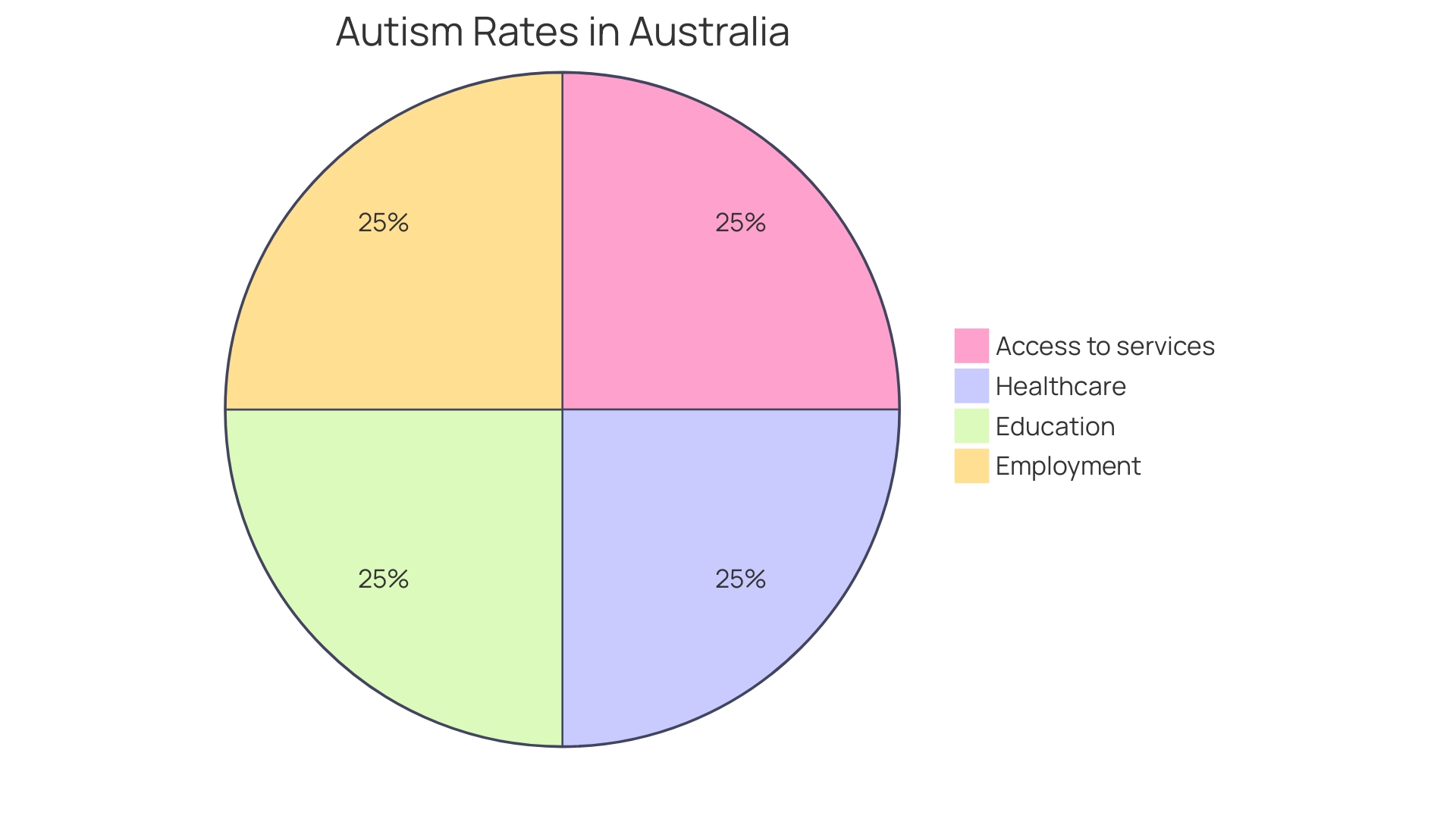
Economic and Social Implications of Autism
Autism Spectrum Disorder (ASD) intricately influences social and economic aspects for individuals and their circles, extending its impact to entire communities. With Autistica estimating approximately 1 in 70 people in the UK being autistic, the reality is that a significant portion of the population, often undercounted, could face lifelong challenges that require robust support systems. Current data reveals that merely 30% of working age autistic individuals are employed, which is significantly lower than the 50% employment rate for all disabled individuals and 80% for non-disabled individuals.
This disparity not only highlights the hurdles in finding employment but also amplifies the need for meaningful initiatives that address the barriers faced by autistic people in the workplace.
The economic implications are equally profound, with autistic individuals experiencing the largest pay gap among all disability groups, earning on average a third less than non-disabled peers. These statistics underscore the urgency for interventions that can cultivate an inclusive work culture, raise awareness, and harness the unique talents of autistic employees.
A comprehensive review launched on World Autism Awareness Day in 2023 has gathered insights from various stakeholders, including employers, autism charities, and autistic individuals themselves. This initiative aims to reshape the employment landscape over the following five years by pinpointing and dismantling the obstacles to hiring and retaining autistic talent. The aspiration is to transform workplaces into environments where neurodiversity is not just accepted but celebrated for the distinct perspectives and skills it brings.
Inclusive employment is not merely a social responsibility but an economic opportunity. Studies have shown that companies embracing a diverse workforce, including those with disabilities, outperform their counterparts, yielding higher revenues and profit margins. Such economic benefits could potentially boost the U.S. GDP by $25 billion if more individuals with disabilities joined the labor force.
This data reinforces the argument for businesses to actively pursue inclusive hiring practices, recognizing the inherent value and contribution of the neurodiverse community to the economy and society at large.
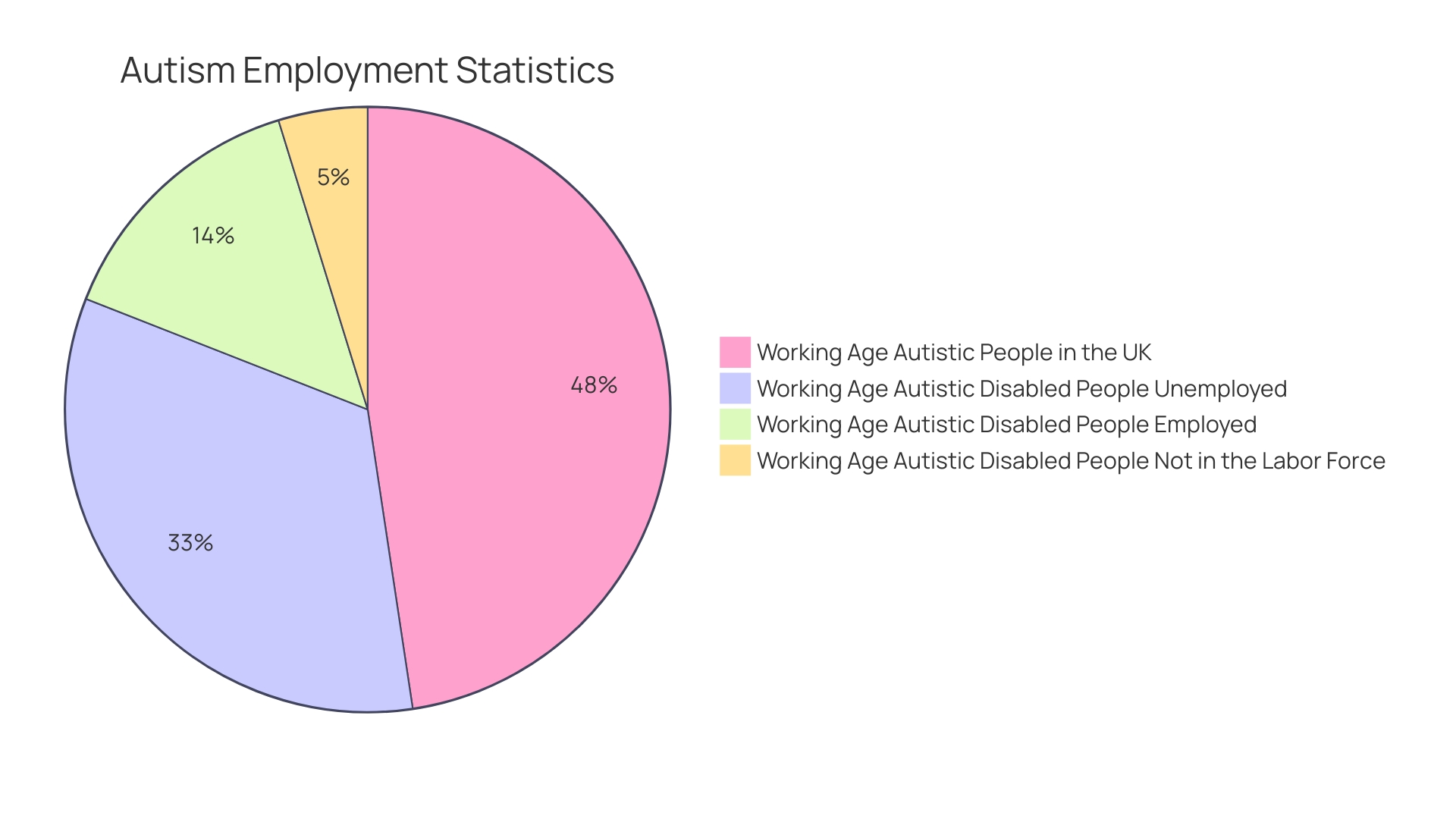
Future Directions and Research Needs
Autism Spectrum Disorder (ASD) is a complex, lifelong neurodevelopmental condition marked by social communication challenges, repetitive behaviors, and restricted interests. With varying symptoms and levels of ability among individuals, ASD manifests across all ethnic, racial, and socioeconomic groups. Despite the global nature of autism, research and understanding of the disorder have historically been skewed towards Western countries.
Recent findings suggest that artificial intelligence can analyze photographs of a child's retina to test for autism, potentially indicating the severity of the condition. This innovative approach, alongside studies conducted by international research groups like the Baby Siblings Research Consortium, underscores the importance of expanding our knowledge base and improving diagnostic tools.
In Australia, diagnosing ASD involves a team of professionals, with early detection being crucial for positive outcomes. The National Disability Insurance Scheme (NDIS) plays a key role in funding early intervention services, reflecting the nation's commitment to supporting individuals with autism.
The neurodiversity movement challenges the traditional view of autism as an illness, advocating for the acceptance of autistic individuals as a marginalized group facing disparities. Emphasizing the model of autism as a variation in neurocognitive functioning, the movement calls for a shift in perspective - from autism as a deficit to a recognition of the need for societal accommodation and support for autistic individuals.
To comprehensively address autism on a global scale, ongoing research must delve into diverse populations and settings. By expanding our understanding beyond Western-centric data, we can develop more precise diagnoses, effective interventions, and supportive services that respect the neurodiversity of individuals with autism no matter where they live.
Conclusion
In conclusion, Autism Spectrum Disorder (ASD) is a global phenomenon that impacts individuals from diverse backgrounds. Understanding its prevalence and impact requires a comprehensive and inclusive approach to research. Collaborative studies have shed light on the familial nature of autism and the role of genetic factors, but it is crucial to explore the influence of environmental factors and societal attitudes on prevalence.
Regional disparities in autism prevalence are influenced by factors such as healthcare accessibility, diagnostic practices, and cultural attitudes. Early intervention and personalized support plans are vital. Improved awareness and diagnostic criteria have led to a surge in diagnoses, emphasizing the need for robust support mechanisms and inclusive policies.
Sociodemographic factors, including socioeconomic status and education levels, impact the occurrence and management of autism. Ethical research practices, personalized interventions, and comprehensive support systems are essential for meeting the diverse needs of affected populations.
The timing of an autism diagnosis is crucial for accessing early intervention services. Efforts to improve diagnostic methods aim to support earlier and more accurate diagnoses. Inclusive employment initiatives are necessary to address barriers and promote economic opportunities for autistic individuals.
Future research should focus on diverse populations and settings, beyond Western-centric data. By developing precise diagnoses, effective interventions, and supportive services, we can respect the neurodiversity of individuals with autism worldwide. Embracing a global perspective and tailored strategies will ensure that every individual with ASD receives the understanding and support they deserve.




